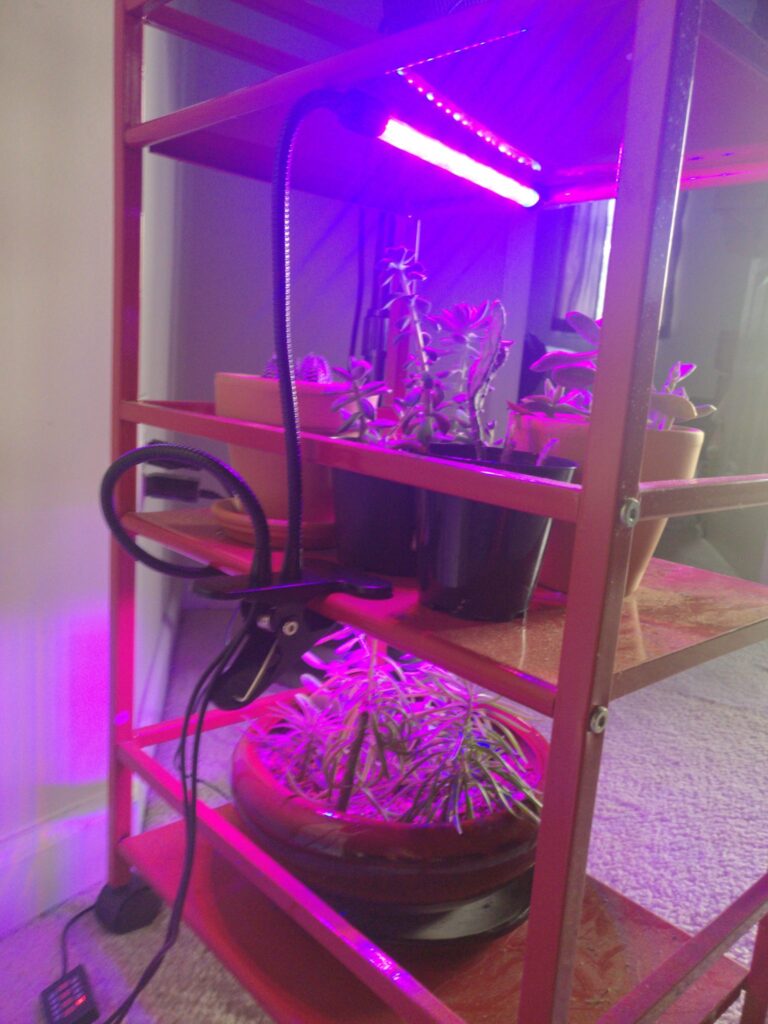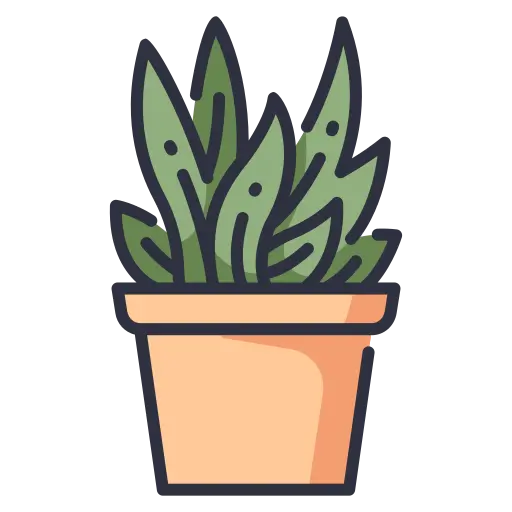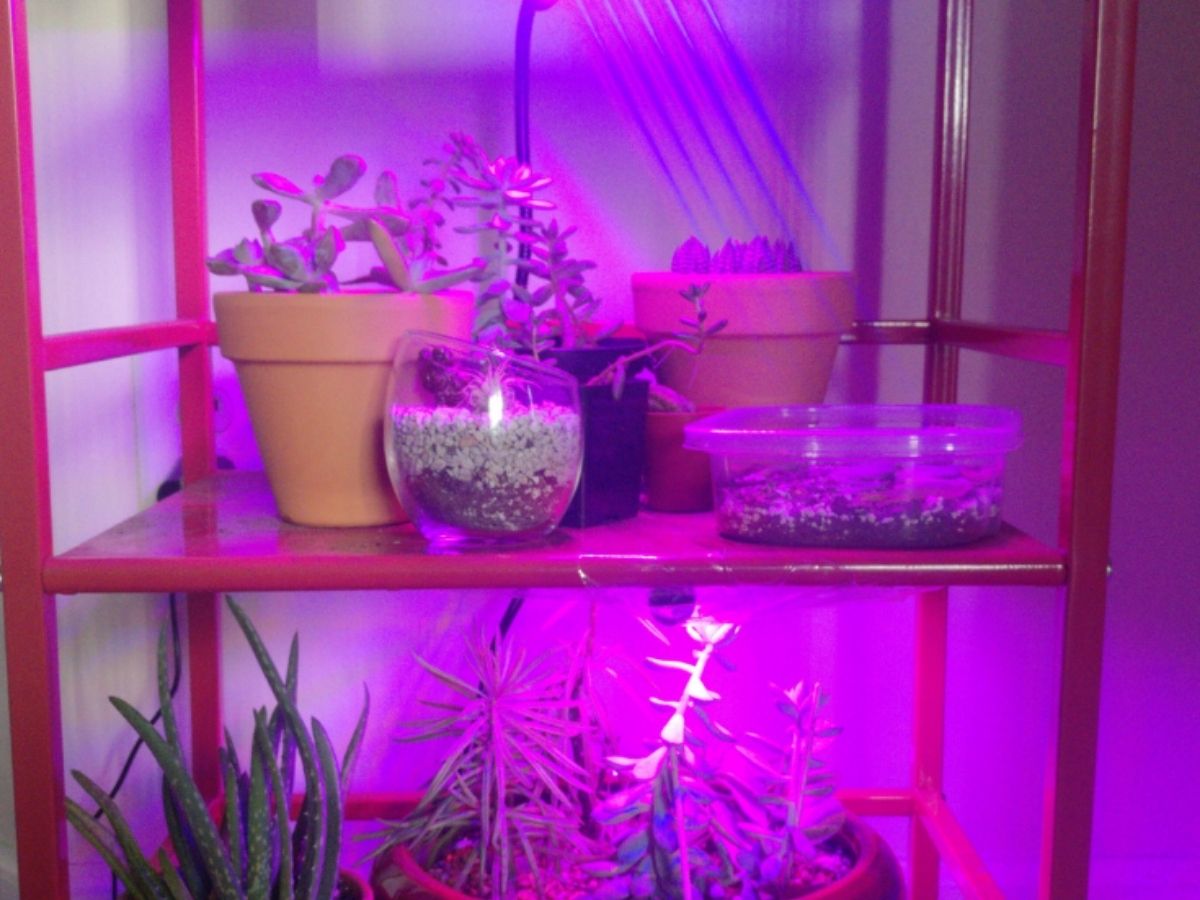Do you need one?
Sometimes your plants just aren’t getting enough light and need a little extra care. Most succulents prefer a minimum of 6 hours of bright, direct sunlight a day. When plants aren’t getting enough light they start to etiolate or stretch out in search of more. This causes the stems to elongate, leaving large gaps between the leaves, and losing the distinct rosette shape many succulents have.
Another instance where you might want a setup like this is to encourage and speed up propagation by having better control of growing conditions.
Combining two items can make a world of difference and your plants health and growth.
What you’ll need
Shelving
what kind of shelving you use is entirely up to you. I’m using a small rolling cart, because I already had one available and I like the mobility, but many people prefer the wire rack type shelves. Wire shelves have the benefit of allowing some light to shine through between shelves, and they usually have adjustable heights.
When choosing a shelf you want to consider size, how much weight it can hold, and the amount of space between the shelves. Too small, or too tight of a space, and you won’t be able to fit your plants on the shelves. On the other hand if you get a big rack, and goose-neck lights like mine, you might have trouble getting your lights to reach more than one shelf effectively. Grow lamps, especially LED and Fluorescent, need to be relatively close to plants to be really effective.
Lights
I got a Lovebay LED grow light with a timer switch on Amazon, but fluorescent grow lamps would also work. I’m still considering adding a fluorescent bar above the top shelf for taller plants.
Here is a link to the 18w LED grow lamps that I’m using.
Secure your lights, either directly to the shelf if that’s feasible, or to the wall where you plan to keep your set up. How you fasten your lights will depend on the types of shelving and lights you put together, but you can get by with clips/clamps, tape, and zip-ties in most instances. If you choose to fasten lights to the wall behind your shelves, then using screws or adhesives like 3M strips can do the trick.
The light I’m using has a handy clip. Because of the awkward angles I forced the goose-necks into, I had to secure the ends of the LED bars with some clear packing tape. The LEDs don’t get hot, so I don’t have to worry about the tape melting or burning.

Usage
Decide how much light to give your succulents
As I mentioned above, most succulents and cacti want a minimum of 6 hours of light—often they want the full day. I’ve been giving my succulents about 12-15 hours of light daily, but if you have natural light available for a portion of the day, you might only want to use it for the hours where the plants aren’t getting the prime lighting they want, whether that be mornings or afternoons. In some cases you might prefer to use your grow lights overnight and leave them off entirely during daylight hours.
Monitor your results and adjust accordingly
You might see that depending on the type of light you chose it could be too close and risk burning your plants, or too far and not being effective. Go ahead and make any necessary adjustments. You could move the lights, adjust the shelves, or just put something under the shorter plants to give them a little extra height.
That’s really all there is to it.
Check back later for a review of the grow lights I’m using. I’m just giving it a little more time so I can get more pictures and document the results. I’ll also be writing an article about the different types of indoor grow lamps available and how to choose what’s right for you.
What do you think of my etiolation station? Do you have any tips or recommendations? Please drop a line in the comments below.


Leave a Reply